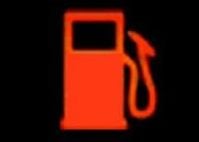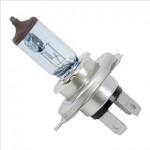So, you’ve passed your driving test and you’ve bought a car. There are some things that you’ll need to keep an eye on and some tell-tale signs that all’s not right.
Check your owner’s manual
There will be some specific advice about how you should look after your car. Don’t have one? You can buy or download almost all owner manuals now. Search online as there are free and paid sites. Free sites such as Just Give Me The Damn Manual will have American versions of the cars, but many details are the same. Or you can try JPNZ in New Zealand and the manuals, which are translations of the original Japanese manuals, are around $50. Or try your local vehicle distributor’s website.
Oil warning light has come on

If this light comes on, stop immediately unless it’s unsafe to do so. You are at real risk of the engine seizing, which will be expensive to fix. Don’t try to drive home – stop as soon as you can, preferably within a couple of hundred metres.
The light coming on means that you are out of (or almost out of) oil, the oil pump has died, or you’ve got a blocked oil filter or strainer in the sump, so your engine won’t be getting lubrication and it’ll be running with metal on metal. Ouch!
Get in the habit of checking your oil every 4-8 weeks. There’s an oil dipstick that’s usually fairly easy to locate in the engine bay because it’ll most likely have a yellow cap and/or have a picture of an oil can on it. Pull the dipstick out, wipe it with a cloth, put it back in, then pull it out again. Check that the level is between the minimum and maximum allowed. Put the dipstick back in (don’t wipe it this time otherwise you’re just wiping perfectly good oil off it).
Don’t overfill your car with oil.
Don’t run out of fuel

While it’s true that you’ll get better fuel economy when your car is lighter (i.e. the fuel tank is emptier), if you run out of fuel your fuel pump will pull all the sludgy petrol from the bottom of the tank through the system and then you’ll need to replace your fuel filter early. Try to fill up before you get underneath 1/8 of a tank. Once your fuel light comes on it’s time to start looking for a petrol station. The other reason to keep your fuel topped up is that if there’s an emergency, e..g you have to drive somewhere immediately and an urgent reason, you don’t want to have to waste precious time filling your tank up.
Coolant warning light has come on
Coolant is the other thing your engine needs along with oil. Learn how to check your coolant levels. If this comes on, you need to stop. Don’t open the radiator as the coolant inside will be under pressure and scalding liquid will spray over you. Only use tap water as a last resort because it leaves mineral deposits that aren’t good for the system.
There’s a light with a circle with an exclamation mark or P that’s on all the time

This is the handbrake light. You are forgetting to take your handbrake off, you aren’t disengaging it completely, or there’s something wrong with it. Travelling with your handbrake on will eventually set fire to the brake shoes. You’ll smell it long before that, though.
Tyre pressures
Your tyres are naturally deflating all the time. You will need to go to a service station and put air in them periodically. You should check your tyres every 4-8 weeks.
If your tyres are under-inflated you’ll be using more fuel than you need to. Don’t over-inflate your tyres because this reduces the amount of tyre in contact with the road and gives you less grip.
If your tyres are over-inflated they will wear in the middle; if they’re under-inflated they’ll wear on the shoulders; if they’re misaligned or you’ve got too much camber they’ll wear on one shoulder much quicker than another. Some cars have tyre pressure monitoring and will display a warning on the dashboard if one or more tyres are the incorrect pressure.
Tyre rotation
To keep your tyre wear even you can rotate your tyres every 10,000km. This means swapping your wheels either side-to-side, front-to-back or diagonally. If you have uni-directional tyres, don’t swap side-to-side otherwise your tyres will end up rotating in the wrong direction for the tread pattern and they won’t disperse water effectively in the wet. You can swap the front left to the rear left and vice versa.
Windscreen washer fluid has run out
Keeping it topped up is particularly important in winter as your car windscreen will get dirty more frequently. If you run out of water in your washer bottle you could be stuck with a windscreen that you can’t see out of.
Headlight bulb has blown

Don’t touch the glass when you replace them because the oil from your fingers will heat up on the bulb’s surface and cause it to crack. Use rubber gloves, or a paper towel or clean cloth to grip the bulb if you need to touch the glass area. It’s OK to touch the metal area.
One indicator is flashing quicker than the other
This means one of your indicator bulbs has blown. Check the owner’s manual and you can get a replacement from any auto parts store. Usually they’re fairly easy to replace.
You’ve stopped your car and now it won’t start again
I have to write this because it happened to me. I learned to drive in a manual car and only ever drove manual cars. I had to leave my car at the garage overnight and they gave me an automatic Toyota Supra with one problem: it kept overheating. On a trip out to Awhitu to see my girlfriend one stormy night, the digital dashboard told me it was getting dangerously hot. I pulled over on the side of the road, put my bonnet up and hazard warning lights on and waited about 15 minutes. I only had another 5km to go, and this was a rural road, so only a couple of cars had come past and neither had stopped. I figured 15 minutes was enough time to let it cool.
I closed the bonnet and went to turn the key. Nothing. The engine didn’t even turn over. I thought perhaps it was still too hot and there was some kind of thermal cut-off. I opened the bonnet again and used a torch to check the engine (not that I really knew what I was looking for). Eventually, after around 5-10 minutes, I saw that I had left the car in gear. I moved it to P and it started fine. A simple thing like that can trip you up.
There’s a knocking from one of the front wheels
Get a mechanic to check your CV joints and bushes. They could be on the way out, especially if it only happens when you turn. If it happens when you brake you could have cracked a brake rotor.
There’s a squealing sound when you start your engine and pull away, but it stops after a few metres
This is your fan belt slipping. It’s cheap to replace, and you should because if it breaks your engine loses a lot of its cooling capability at low speeds.
Get your car serviced
Your car won’t run forever on the same fluids. Plus, a mechanic will be able to pick up items that need to be carried out for preventative maintenance. Usually, your car will be serviced somewhere between every 5000-15000km (depending on how new it is), or every 6-12 months if you don’t do that many kilometres.
What can you do now?
Set some diary reminders to check your windscreen washer fluid, oil level, tyre tread depth and tyre pressures. The more kilometres you drive, the more frequently you will need to do it, but usually every 4-8 weeks is fine. There are iPhone and Android apps for reminding you.

